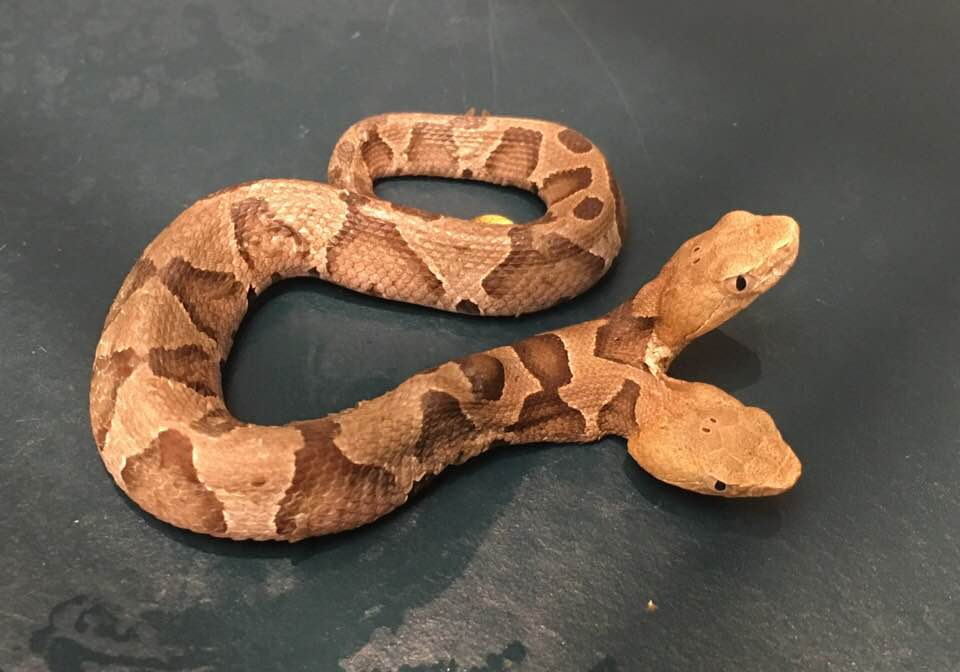It is unknown why the snake died, but experts say that chance of survival for two-headed snakes is slim.
Back in September, a baby two-headed copperhead snake (Agkistrodon contortrix) was found in a woman's flowerbed in Virginia. JD Kleopfer, a herpetologist with the Virginia Department of Game and Inland Fisheries said at the time that the snake was exceptionally rare and never saw anything like it in the 30 years he has studied snakes.

Type image credit here
It is unknown why the snake died, but experts say that chance of survival for two-headed snakes is slim.
Kleopfer posted news about the snake's passing on social media early this week "Sad news. Our little buddy peacefully passed away last week. No apparent reason, just found dead one morning."
Two-Headed Baby Copperhead Snake Found Alive In Virginia
Two-Headed Copperhead Snake To Be Displayed At Kentucky Wildlife Center
Kleopfer said that snake keepers who care for tw-headed snakes told him that sharing a body stresses the animal, especially the spine because the heads often times want to move in different directions.
The snake had two heads but a single heart, and one set of lungs. Both heads appeared to be capable of venom delivery.
Another baby two-headed copperhead snake was found in Kentucky last month. That snake is at the Salato Wildlife Education Center.
Copperhead snakes can be found throughout much of the Eastern Seaboard, from southern New England to Maryland and westward to northern Alabama and southern Illinois. The species grows to about 2½ feet in length and sometimes reach 4 feet. They live from 12-20 years and feed on ground dwelling birds, small rodents, amphibians and lizards. It is a venomous species and has been documented to reproduce via parthenogenesis, a process whereby a female animal gives birth without having her eggs fertilized by a male.



